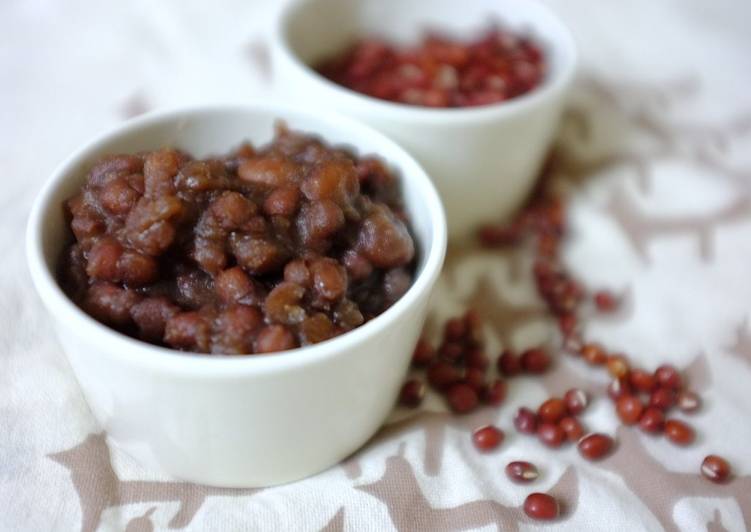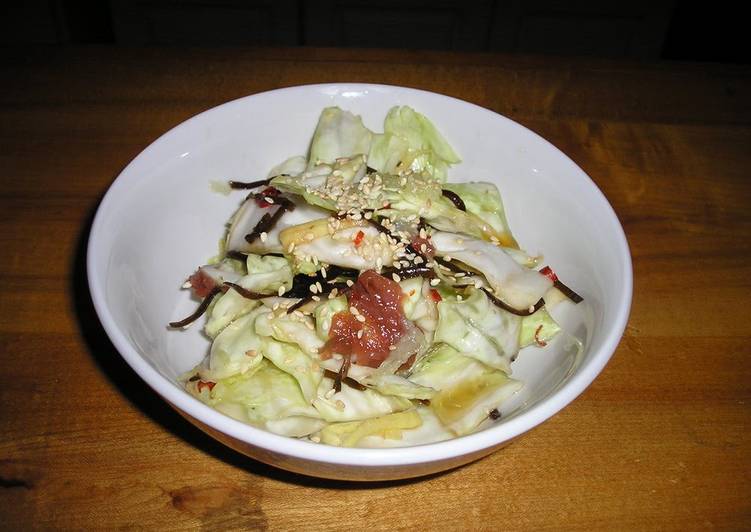
Hey everyone, hope you are having an amazing day today. Today, I’m gonna show you how to prepare a distinctive dish, japanese sweet azuki beans. One of my favorites food recipes. This time, I’m gonna make it a bit tasty. This will be really delicious.
Japanese Sweet Azuki Beans is one of the most favored of recent trending meals in the world. It is appreciated by millions every day. It is easy, it is fast, it tastes delicious. Japanese Sweet Azuki Beans is something that I have loved my entire life. They’re fine and they look fantastic.
Soak beans overnight in a pot covered with an inch or two of water. The next day, heat the pot of beans until they are almost ready to boil. In Japanese cooking, Azuki beans (or Adzuki beans) are almost exclusively used in making Japanese sweets or pastries.
To begin with this recipe, we have to first prepare a few ingredients. You can cook japanese sweet azuki beans using 4 ingredients and 9 steps. Here is how you can achieve it.
The ingredients needed to make Japanese Sweet Azuki Beans:
- Prepare 150 g Azuki beans (about 3/4 cup or 150 ml)
- Get 100 g Light brown or regular sugar (about 1/2 cup), more or less depending on taste
- Prepare 1 pinch Salt
- Take Ice water
Bean jam is made from azuki beans. A sweet porridge is eaten with rice-flour dumplings of broiled and crushed azuki beans. Azuki bean or red mung bean is an annual vine known for its small beans which can be largely found in East Asia. Mochi, on the other hand, is a Japanese rice cake made of.
Steps to make Japanese Sweet Azuki Beans:
- Soak beans overnight in a pot covered with an inch or two of water.
- The next day, heat the pot of beans until they are almost ready to boil.
- Meanwhile, prepare a big bowl of ice cold water, which you'll be throwing the beans in next. This will "shock" them and help crack the skin so they become softer easily when boiling.
- Drain off the hot water from the beans. Immediately throw them into the ice water.
- Drain beans and put back in pot. Pour in enough water to cover. Bring to a boil, then simmer on low for about 60 minutes until soft. Skim off any foam that rises while simmering. If the water gets low, add a little more.
- Once the beans are soft (they should be easily mashable), mix in the sugar. I used about 100g/half cup. But I recommend starting with less and adding a little at a time until it's sweet enough for you.
- Bring to a simmer again, making sure the sugar is dissolved. If it's too soupy, simmer off some of the liquid.
- That's it! You can optionally pour off some of the water and mash into a paste (called anko). Store it for up to week in the refrigerator, or freeze it along with the liquid.
- There are lots of ways to use and turn sweet azuki into yummy Japanese goodies: -eat over rice dumplings (dango 団子)or ice cream -use paste as spread for bread or baked inside sweet buns -Made into "zenzai" soup along with "mochi" (rice cakes). Search and explore the internets for more ideas ;)
They are not only used to make red bean rice but are also widely used in Japanese sweets in the form of sweet red bean paste called 'anko' (あんこ). The adzuki bean (Vigna angularis; from azuki (Japanese: アズキ(小豆)); sometimes transliterated as azuki or aduki), or red mung bean, is an annual vine widely cultivated A more liquid version, using adzuki beans boiled with sugar and a pinch of salt, produces a sweet dish called hong dou tang. Sweet azuki bean paste (anko) is a central ingredient in a large number of Japanese sweets. Boiled azuki beans are sweetened with sugar and mashed to create either smooth anko (koshian) or chunky anko (tsubuan). Buy products related to japanese sweet beans and see what customers say about japanese sweet beans on Amazon.com ✓ FREE DELIVERY possible on eligible purchases.
So that is going to wrap this up with this special food japanese sweet azuki beans recipe. Thanks so much for your time. I am sure you will make this at home. There is gonna be interesting food in home recipes coming up. Remember to save this page in your browser, and share it to your family, friends and colleague. Thanks again for reading. Go on get cooking!


